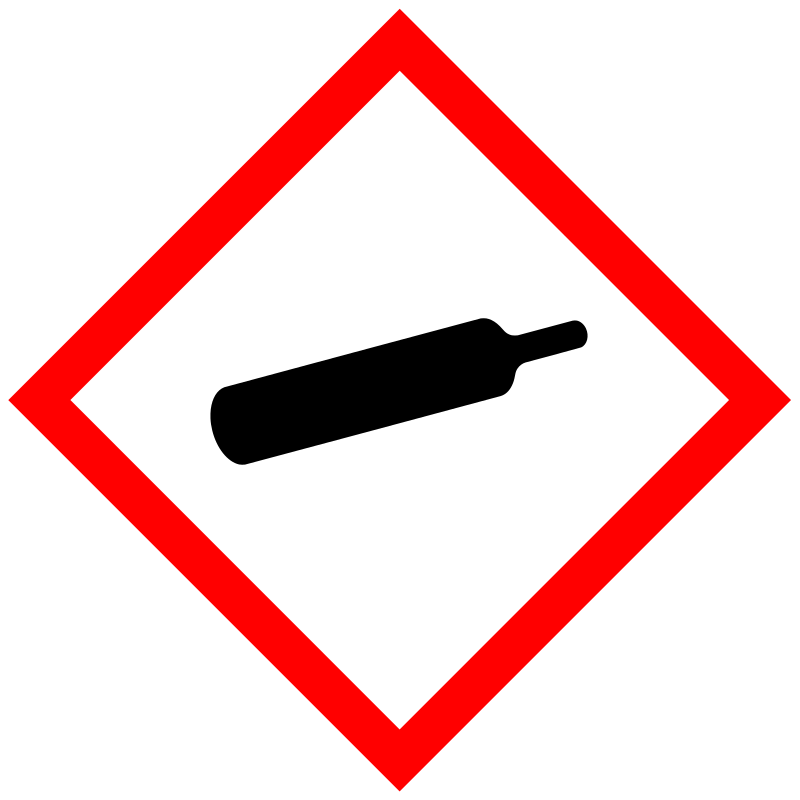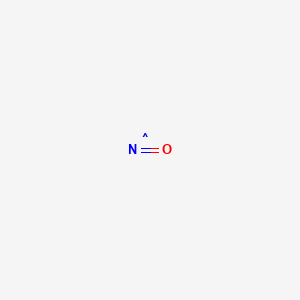D0552 | nitric oxide
R
R07AX01 Nitric oxide
[R07AX] Other respiratory system products
[R07A] OTHER RESPIRATORY SYSTEM PRODUCTS
[R07] OTHER RESPIRATORY SYSTEM PRODUCTS
[R] Respiratory system
| Toxicity | Dose | Time | Species | Model | Method | Action | Positive criterion | Reference |
|---|---|---|---|---|---|---|---|---|
| ELECTRON TRANSPORT CHAIN | affect | 167 | ||||||
| Pictogram | Signal | Statements | Precautionary Statement Codes |
|---|---|---|---|
     |
Danger |
Aggregated GHS information provided by 276 companies from 6 notifications to the ECHA C&L Inventory. Each notification may be associated with multiple companies. H270 (100%): May cause or intensify fire oxidizer [Danger Oxidizing gases] H280 (86.23%): Contains gas under pressure may explode if heated [Warning Gases under pressure] H314 (100%): Causes severe skin burns and eye damage [Danger Skin corrosion/irritation] H318 (32.25%): Causes serious eye damage [Danger Serious eye damage/eye irritation] H330 (86.23%): Fatal if inhaled [Danger Acute toxicity, inhalation] H331 (13.77%): Toxic if inhaled [Danger Acute toxicity, inhalation] H373 (30.07%): Causes damage to organs through prolonged or repeated exposure [Warning Specific target organ toxicity, repeated exposure] Information may vary between notifications depending on impurities, additives, and other factors. The percentage value in parenthesis indicates the notified classification ratio from companies that provide hazard codes. Only hazard codes with percentage values above 10% are shown. |
P220, P244, P260, P261, P264, P271, P280, P284, P301+P330+P331, P303+P361+P353, P304+P340, P305+P351+P338, P310, P311, P314, P320, P321, P363, P370+P376, P403, P403+P233, P405, P410+P403, and P501; (The corresponding statement to each P-code can be found at the GHS Classification page.) |
    |
Danger |
H270: May cause or intensify fire oxidizer [Danger Oxidizing gases] H280: Contains gas under pressure may explode if heated [Warning Gases under pressure] H330: Fatal if inhaled [Danger Acute toxicity, inhalation] H370: Causes damage to organs [Danger Specific target organ toxicity, single exposure] |
P220, P244, P260, P264, P270, P271, P284, P304+P340, P307+P311, P310, P320, P321, P370+P376, P403, P403+P233, P405, P410+P403, and P501; (The corresponding statement to each P-code can be found at the GHS Classification page.) |
    |
Danger |
H270: May cause or intensify fire oxidizer [Danger Oxidizing gases] H280: Contains gas under pressure may explode if heated [Warning Gases under pressure] H331: Toxic if inhaled [Danger Acute toxicity, inhalation] H370: Causes damage to organs [Danger Specific target organ toxicity, single exposure] |
P220, P244, P260, P261, P264, P270, P271, P304+P340, P307+P311, P311, P321, P370+P376, P403, P403+P233, P405, P410+P403, and P501; (The corresponding statement to each P-code can be found at the GHS Classification page.) |
| (.)NO | (NO)(.) | 10102-43-9 |
| C00533 | CHEBI:16480 | CHEMBL1200689 |
| CTK0H7679 | D00074; | DB00435 |
| DTXSID1020938 | EDRF | HOA |
| INOmax (TN) | Mononitrogen monoxide | NO(.) |
| Nitric oxide (JAN) | Nitric oxide, 98.5% | Nitrosoradical |
| OHM 11771 | Stickstoff(II)-oxid | Stickstoffmonoxid |
| [NO] | endothelium-derived relaxing factor | monoxido de nitrogeno |
| monoxyde d'azote | nitric oxide | nitrogen monooxide |
| nitrogen monoxide | nitrosyl | oxido de nitrogeno(II) |
| oxido nitrico | oxidonitrogen(.) | oxoazanyl |
| oxyde azotique |

